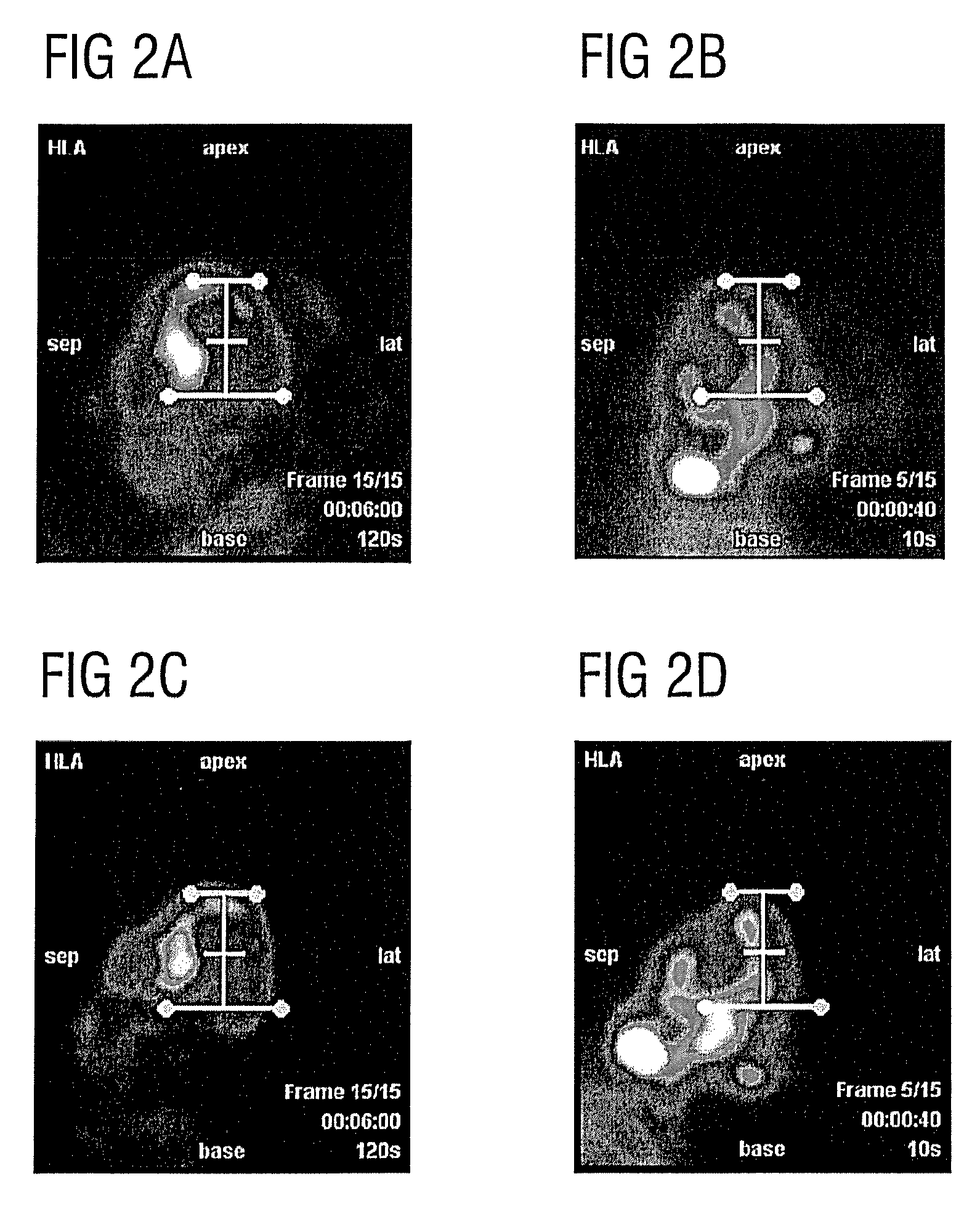Reorientation of cardiac images
a cardiac image and reorientation technology, applied in image enhancement, instruments, x/gamma/cosmic radiation measurement, etc., can solve the problems of unsatisfactory results of known automatic reorientation methods, errors in further processing of image data, and inability to directly detect the location of body features of pet or spect imaging
- Summary
- Abstract
- Description
- Claims
- Application Information
AI Technical Summary
Benefits of technology
Problems solved by technology
Method used
Image
Examples
Embodiment Construction
[0029]The present invention accordingly provides a method that identifies automatically the early frame blood pool image corresponding to a late frame image, and compares reorientation angles that have been found, either manually or automatically, from the late frame to a major axis found in the blood pool image.
[0030]A thresholding step may be used to determine whether the reorientation angle determined from the late frame differs significantly from the major axis identified in the early, blood pool, image. If a significant difference is identified, being in excess of a defined threshold, a warning is given to a user. Optionally, the blood pool image may be displayed for verification and new reorientation angle(s) may be suggested.
[0031]The early frame blood pool image which is automatically identified in the method of the present invention may be selected by identifying the peak frame containing the blood pool image. This image is preferably displayed either in the cardiac view or...
PUM
 Login to View More
Login to View More Abstract
Description
Claims
Application Information
 Login to View More
Login to View More - R&D
- Intellectual Property
- Life Sciences
- Materials
- Tech Scout
- Unparalleled Data Quality
- Higher Quality Content
- 60% Fewer Hallucinations
Browse by: Latest US Patents, China's latest patents, Technical Efficacy Thesaurus, Application Domain, Technology Topic, Popular Technical Reports.
© 2025 PatSnap. All rights reserved.Legal|Privacy policy|Modern Slavery Act Transparency Statement|Sitemap|About US| Contact US: help@patsnap.com



